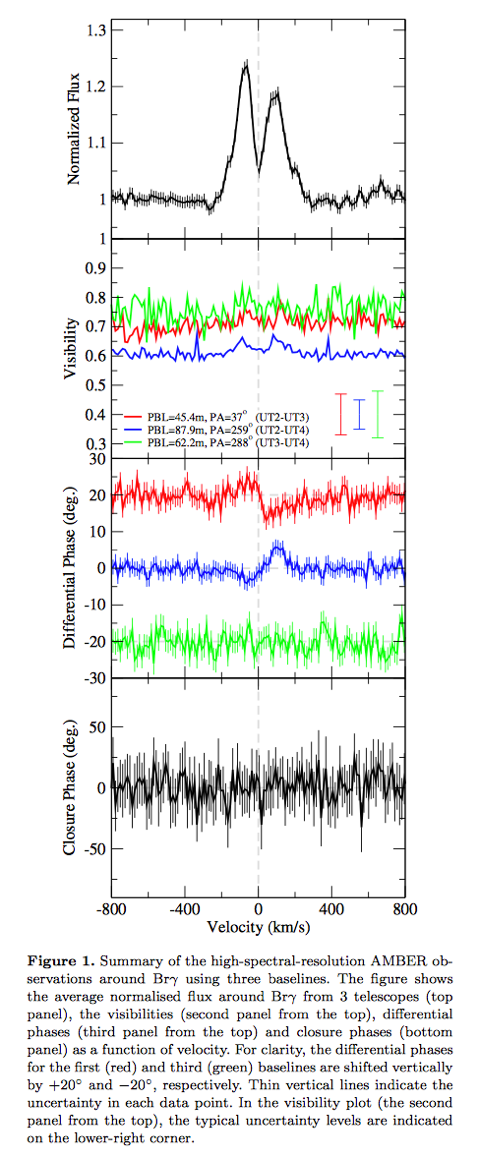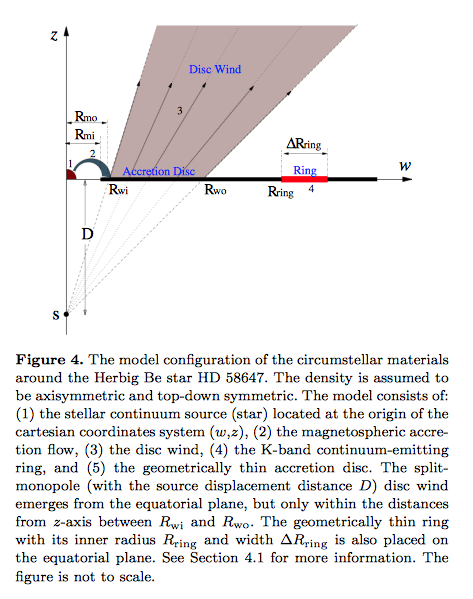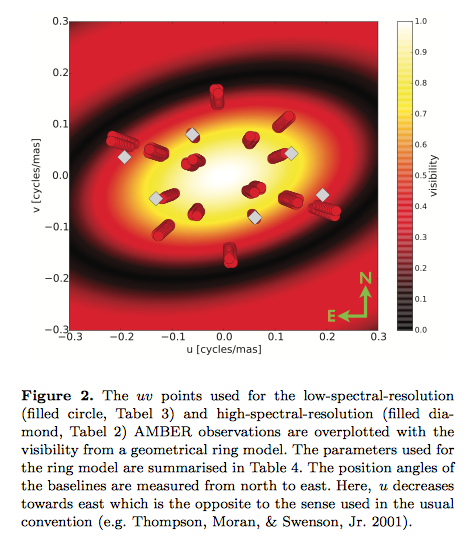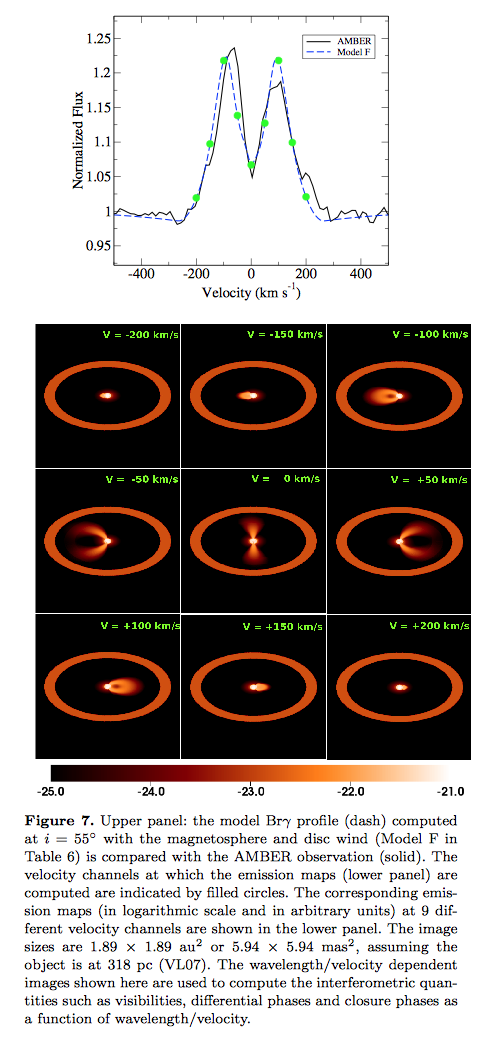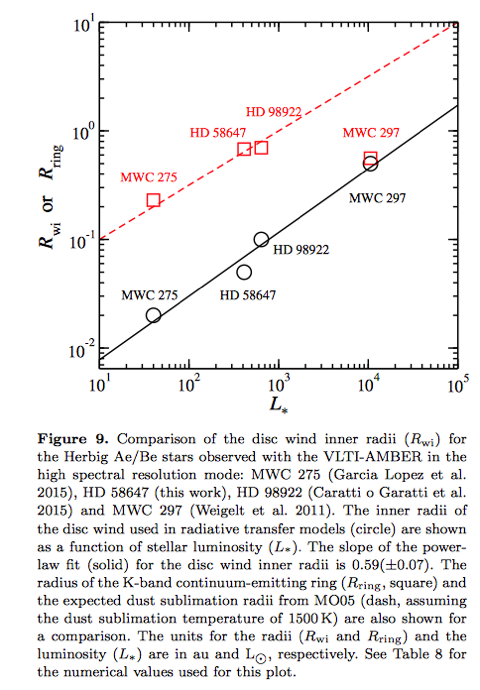by D. Kurosawa, Ryuichi; Kreplin, A.; Weigelt, G.; Natta, A.; Benisty, M.; Isella, Andrea; Tatulli, Eric; Massi, F.; Testi, Leonardo; Kraus, Stefan; Duvert, G.; Petrov, Romain G.; Stee, Ph., 2016, MNRAS, 457, 2236
We present a study of the wind launching region of the Herbig Be star HD 58647 using high angular (λ/2B = 0′′.003) and high spectral (R = 12000) resolution interferomet- ric VLTI-AMBER observations of the near-infrared hydrogen emission line, Brγ. The star displays double peaks in both Brγ line profile and wavelength-dependent visibil- ities. The wavelength-dependent differential phases show S-shaped variations around the line centre. The visibility level increases in the line (by ∼ 0.1) at the longest pro- jected baseline (88 m), indicating that the size of the line emission region is smaller than the size of the K-band continuum-emitting region, which is expected to arise near the dust sublimation radius of the accretion disc. The data have been analysed using radiative transfer models to probe the geometry, size and physical properties of the wind that is emitting Brγ. We find that a model with a small magnetosphere and a disc wind with its inner radius located just outside of the magnetosphere can well reproduce the observed Brγ profile, wavelength-dependent visibilities, differential and closure phases, simultaneously. The mass-accretion and mass-loss rates adopted for the model are M ̇ a = 3.5 × 10−7 and M ̇ dw = 4.5 × 10−8 M⊙ yr−1, respectively (M ̇dw/M ̇a = 0.13). Consequently, about 60 per cent of the angular momentum loss rate required for a steady accretion with the measured accretion rate is provide by the disc wind. The small magnetosphere in HD 58647 does not contribute to the Brγ line emission significantly.
